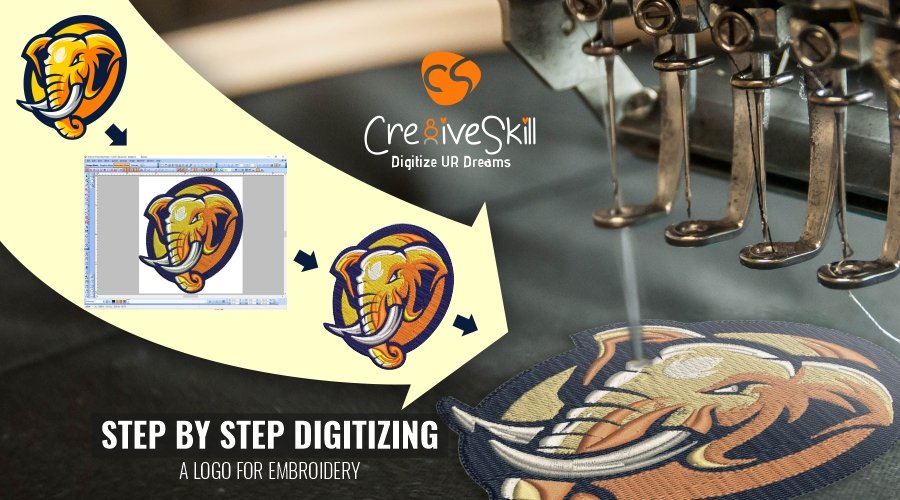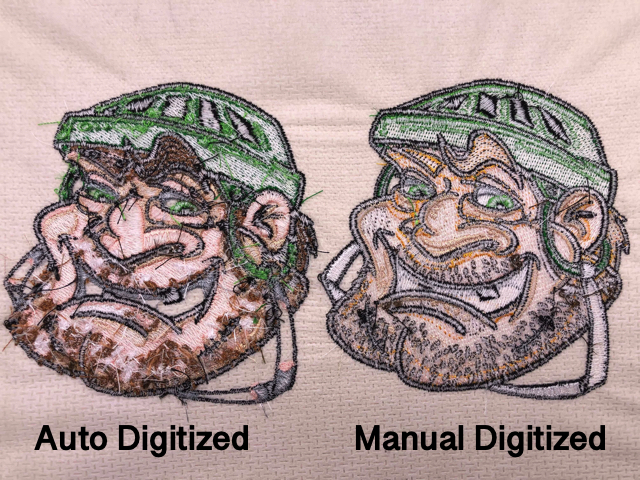Mastering the Needlework Digitizing Process: Your Ultimate Guide
Embroidery digitizing is a careful craft that calls for accuracy and proficiency to translate elaborate designs into digital formats for machine embroidery. As artisans get started on this trip to understand the needlework digitizing procedure, a thorough understanding of the essentials establishes the structure for excellence.

Recognizing Embroidery Digitizing Fundamentals
Needlework digitizing essentials form the foundation whereupon intricate designs are equated right into machine-readable formats for precise stitching. This first action in the embroidery digitizing process is crucial for making sure that the last embroidered product is a devoted depiction of the original design. Understanding embroidery digitizing essentials involves comprehending vital concepts such as stitch types, stitch instructions, thickness, underlay, and pull compensation.
Stitch kinds play a vital duty in determining the visual and textural result of the embroidered layout. By selecting the suitable stitch kind, whether it be satin, fill, or running stitch, digitizers can attain the desired result and enhance the general top quality of the needlework. Furthermore, stitch direction affects the circulation and measurement of the layout, while thickness establishes the spacing and insurance coverage of the stitches.
In addition, rug stitching offers stability to the design by securing the textile and protecting against distortion throughout the needlework process. Pull compensation is one more necessary consideration to neutralize the all-natural tendency of material to contract when sewn. Understanding these needlework digitizing fundamentals is essential for producing professional-quality embroidered products.
Choosing the Right Digitizing Software
Picking the appropriate digitizing software is a crucial choice that dramatically impacts the efficiency and quality of the needlework digitizing procedure. Digitizing for Embroidery. When choosing the appropriate digitizing software, it is vital to consider aspects such as the intricacy of designs you plan to develop, the user-friendliness of the software, the degree of customer support used, and the compatibility with your needlework device
There are numerous digitizing software options offered in the marketplace, varying from basic programs for novices to sophisticated software application for specialist digitizers. Some popular choices include Wilcom EmbroideryStudio, Hatch Embroidery Software Application, and PulseID. These software supply a vast array of tools and features to help you create elaborate styles easily.
Prior to making a choice, it is suggested to discover the different software application alternatives through cost-free trials or trials to determine which one ideal matches your needs. Furthermore, reviewing evaluations and looking for suggestions from experienced digitizers can provide important understandings right into the toughness and weak points of each software program bundle (Digitizing for Embroidery). By meticulously evaluating your requirements and comparing the features of various digitizing software application, you can make an educated selection that boosts your embroidery digitizing process
Digitizing Devices and Strategies

Optimizing Style Settings for Embroidery
Grasping the complexities of style settings is fundamental in achieving optimal lead to the embroidery digitizing procedure, structure upon the structure laid by recognizing digitizing devices and methods. When enhancing design settings for needlework, it is vital to consider factors such as stitch kind, thickness, rug, pull compensation, and registration. Sew kind choice impacts the overall appearance and feeling of the style, with options like satin, fill, and running stitches offering various structures and effects. Density describes the spacing and thickness of stitches, affecting the layout's protection and sturdiness. Appropriate underlay sewing offers stability and protects against material distortion, especially for intricate styles or on stretchy materials. Pull payment changes for textile stretch throughout stitching, ensuring exact style duplication. Registration settings line up different components of the design properly, preserving total style integrity. By fine-tuning these style settings, embroiderers can improve the quality and accuracy of their embroidered productions.

Troubleshooting Common Digitizing Issues
When coming across common digitizing problems during the embroidery process, it is vital to comprehend the root triggers and execute reliable options promptly. One typical trouble is stitch thickness concerns, where stitches may be too dense, triggering the textile to pucker, or as well thin, resulting in voids in the design. Changing the stitch thickness setups in the digitizing go to this website software can assist solve this concern.
Another regular difficulty is string breaks throughout the embroidery process. This can happen as a result of numerous reasons such as incorrect tension a knockout post setups, plain needles, or making use of low-quality thread. Guaranteeing appropriate upkeep of the needlework machine, including regular needle modifications and stress changes, can minimize the incident of thread breaks.
In addition, style registration mistakes can cause misaligned components within the needlework design. Inspecting the layout placement in the digitizing software and making needed changes prior to stitching can assist in preventing this problem. By resolving these common digitizing problems immediately and successfully, you can make certain a smoother needlework procedure and top quality finished products.
Final Thought
Finally, understanding the needlework digitizing procedure calls for a strong understanding of the essentials, the right choice of software, and expertise of devices and techniques. Optimizing design settings and troubleshooting common digitizing issues are essential action in ensuring high-quality needlework outcomes. By complying with these steps vigilantly, one can achieve precision and performance in the digitizing procedure.